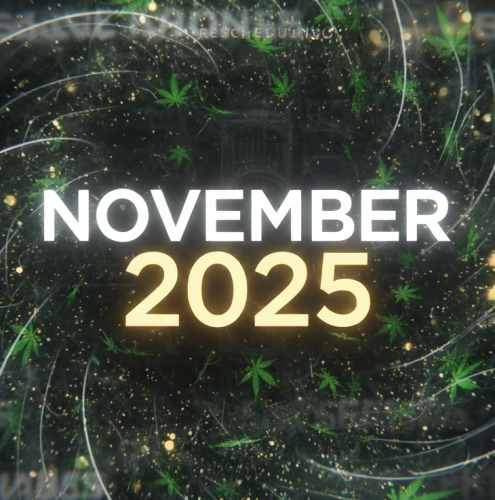The conversation surrounding cannabis in the United States is currently dominated by the potential for federal rescheduling. This move could signify a monumental shift in how the nation views and regulates this complex plant. Which may lead to impacting everything from medical research to business operations and social justice. To understand the significance of this potential change, it’s crucial to examine cannabis’s current federal classification. The implications of rescheduling and the historical context of its scheduling journey.
Cannabis Today: A Schedule I Substance
Currently, under the Controlled Substances Act (CSA) of 1970, cannabis is classified as a Schedule I substance. This category is reserved for drugs that the federal government deems to have a high potential for abuse, not currently accepted medical use in the United States, and a lack of accepted safety for use under medical supervision. This classification places cannabis alongside substances like heroin, LSD, and ecstasy, a categorization that many argue is outdated and contradicts scientific evidence and state-level legalization efforts.
♦ Interested in high-quality CBD edibles and merchandise? Check out the FGE shop ♦
The Schedule I designation has far-reaching consequences, creating significant hurdles for researchers seeking to study the potential medical benefits and risks of cannabis. Obtaining necessary licenses and navigating stringent regulations can be a lengthy and complex process. Furthermore, federally regulated banks are often hesitant to provide services to cannabis businesses due to the plant’s illegal status at the federal level. Which, in turn, forces many businesses to operate primarily in cash, increasing security risks and hindering financial transparency.
Cannabis businesses also face tax burdens, often unable to deduct ordinary business expenses under IRS Section 280E, resulting in significantly higher tax liabilities and hindering their growth and sustainability. Finally, despite state-level legalization, federal prohibition can still lead to arrests and prosecutions, particularly in interstate commerce cases or on federal lands.
The Potential Future: Rescheduling to Schedule III
The most prominent proposal currently under consideration is the rescheduling of cannabis to Schedule III of the CSA. This category is for substances that have a potential for abuse, less than the substances in Schedules I or II, and have a currently accepted medical use in the United States, with a potential for abuse that may lead to moderate or low physical dependence or high psychological dependence. Examples of Schedule III substances include ketamine, anabolic steroids, and some products containing codeine.
Rescheduling to Schedule III would bring about several significant changes. It would likely ease the regulatory burden on researchers, paving the way for more extensive and rigorous studies into its potential medical applications for certain conditions and diseases.
Moreover, while cannabis would still be federally controlled, rescheduling could make federally regulated banks more comfortable working with cannabis businesses, providing access to loans, checking accounts, and other financial services, which would improve the financial stability and security of the industry.
It’s important to note that even under Schedule III, cannabis would still be federally regulated, meaning it would not be fully legal like alcohol or tobacco at the federal level. Production, distribution, and sales regulations would likely still exist, although they would differ from the current framework.
Federal rescheduling would not automatically legalize cannabis in states that currently prohibit it. States would still have the autonomy to maintain their laws regarding cannabis. However, federal rescheduling could influence more states to reconsider their prohibitionist stances.
A Brief History of Cannabis Scheduling
The federal scheduling of cannabis has been a contentious issue for decades, marked by evolving scientific understanding, shifting political climates, and increasing public acceptance. Before the passage of the CSA in 1970, cannabis regulation was primarily left to individual states. With the enactment of the CSA, cannabis was placed in Schedule I, largely based on prevailing social and political biases rather than conclusive scientific evidence.
The Shafer Commission, appointed by President Nixon to study marijuana, actually recommended decriminalization in 1972, but this recommendation was largely ignored. For decades, cannabis remained firmly entrenched in Schedule I at the federal level, despite growing anecdotal evidence of its medical benefits and increasing calls for reform. Starting in the mid-1990s, individual states began to challenge the federal prohibition by legalizing medical cannabis, with California being the first in 1996, and this movement gradually gained momentum. Colorado and Washington became the first states to legalize cannabis for recreational use in 2012, further highlighting the divergence between state and federal law.
As more states legalized cannabis, the pressure on the federal government to address the inconsistencies and harms of federal prohibition intensified. In recent years, there have been increasing calls from lawmakers, advocacy groups, and even federal agencies for a review of cannabis’s scheduling.
The Department of Health and Human Services (HHS) recently recommended to the DEA that cannabis be moved to Schedule III, citing scientific evidence regarding its medical uses and lower potential for abuse compared to other Schedule I substances. As of mid-2025, the DEA is actively reviewing the HHS recommendation and considering the potential rescheduling of cannabis. This process involves scientific and legal evaluations and could lead to a significant policy change in the near future.
However, the timeline and outcome remain uncertain due to potential legal challenges and bureaucratic processes.
Conclusion
The potential federal rescheduling of cannabis represents a critical juncture in its history. Moving it from Schedule I to Schedule III would acknowledge the growing scientific understanding of its potential medical benefits and align federal policy more closely with the realities of state-level legalization. While it wouldn’t signify full federal legalization, it would be a significant step towards a more rational and evidence-based approach to cannabis regulation in the United States, with wide-ranging implications for research, business, and social justice.
The journey of cannabis scheduling reflects a broader societal shift in understanding this complex plant, and the current deliberations hold the promise of a more progressive and pragmatic future.






